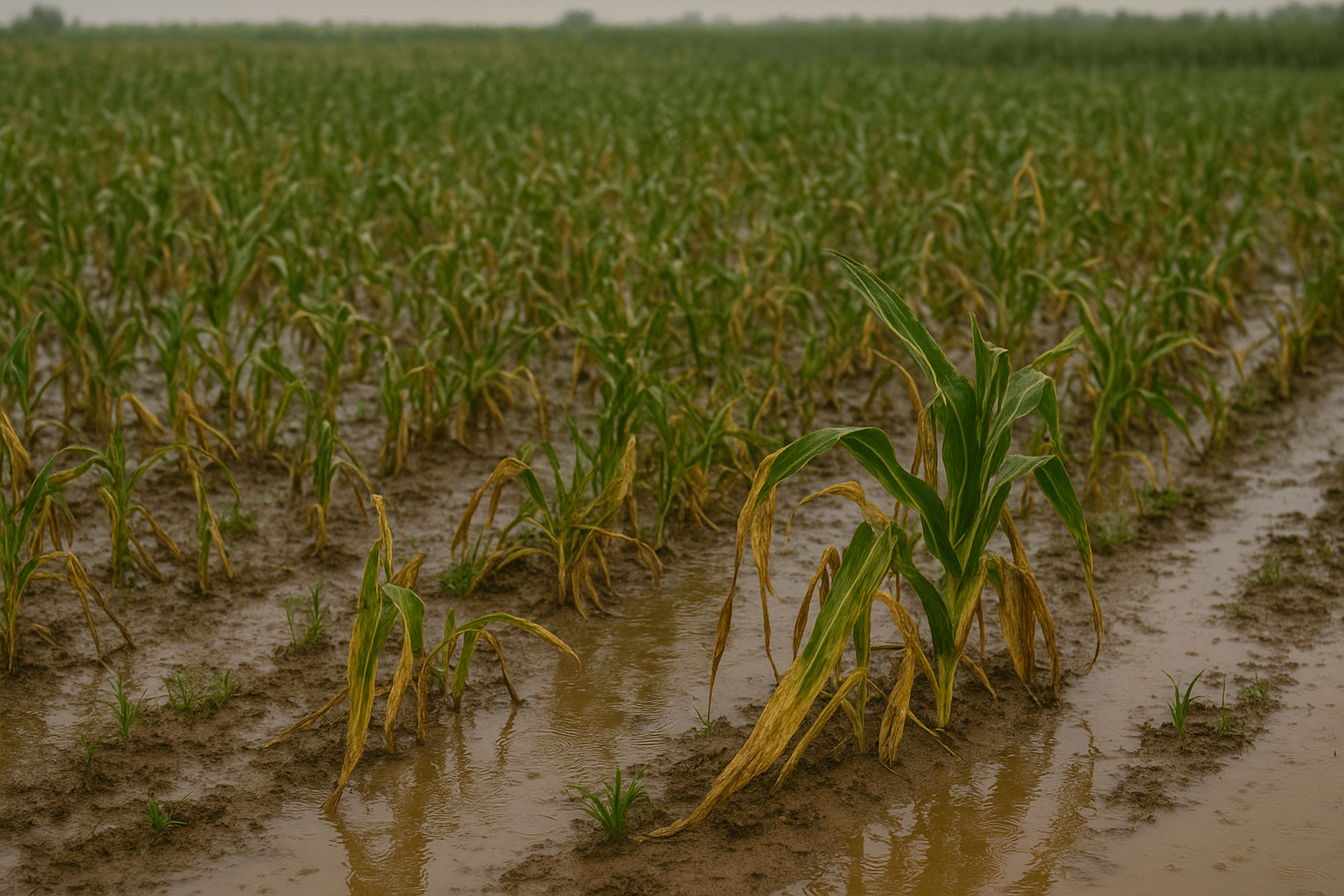
Crops on 1.4 Million Hectares Damaged Due to Heavy Rain in August Across Maharashtra
Maharashtra’s farmers have been hit hard by the heavy downpour in August, with the state agricultural department reporting that kharif crops on nearly 1.44 million hectares (3.61 million acres) were damaged across 29 districts. The unseasonal intensity of rainfall, particularly between August 15 and August 20, has left a trail of destruction across Vidarbha, Marathwada, and parts of western Maharashtra, raising concerns about food security and farmer livelihoods.
Scale of Crop Damage
According to the department’s preliminary report released on Friday, 191 tehsils across the state have recorded significant losses. The affected crop area spans 1,444,749 hectares, though officials cautioned that the figure could rise once final panchnamas and field verifications are completed.
The damage has been particularly severe for Maharashtra’s staple kharif crops. Soybean, maize, cotton, and pulses—which form the backbone of the state’s agricultural economy—have suffered extensive losses due to flooding and waterlogging. These crops are highly vulnerable to prolonged exposure to standing water, leading to wilting, rotting, and a sharp decline in expected yields.
Districts Hit the Hardest
The worst-affected district is Nanded in Marathwada, where crops on over 620,566 hectares of farmland were destroyed after torrential rains and flooding inundated fields. Nanded also faced cloudburst-like conditions, compounding the destruction.
Other districts where crop losses exceeded 10,000 hectares include:
- Yavatmal
- Washim
- Dharashiv (Osmanabad)
- Buldhana
- Solapur
- Akola
- Amravati
- Hingoli
- Beed
- Parbhani
- Jalgaon
Together, these districts represent the agricultural heartland of Maharashtra, making the widespread crop damage particularly alarming.
Human and Environmental Impact
The rains did not just affect agriculture but also claimed human lives. Several people lost their lives due to lightning strikes and drowning incidents. Villages across multiple districts were flooded, forcing hundreds of residents to relocate to safer places. Residential areas, livestock, and rural infrastructure also bore the brunt of nature’s fury, compounding the hardships of already vulnerable farming communities.
Government Response
Agriculture Minister Dattatray Bharne acknowledged the seriousness of the situation, assuring farmers that the state would extend all necessary assistance. He stated that panchnamas—official documents prepared after physical verification of losses—are in the final stages of completion.
“Heavy rains between August 15 and August 20 caused massive damage to crops. The government will provide help to all affected farmers. Not a single farmer will be left behind,” Bharne said.
Officials have indicated that once the assessments are finalized, compensation packages will be rolled out to farmers under disaster relief norms.
Economic Concerns
The widespread crop losses are expected to have a ripple effect on Maharashtra’s rural economy. Soybean and cotton are major cash crops that not only support farmer incomes but also fuel agro-based industries. Similarly, the destruction of pulses and maize could push up retail food prices in the coming months, adding inflationary pressure to households already struggling with rising costs.
Experts warn that such large-scale crop damage could also affect the state’s Gross Value Added (GVA) in agriculture, which remains a crucial contributor to Maharashtra’s economy.
A Pattern of Climate Stress
This is not the first time Maharashtra has faced the dual challenge of droughts and floods. Climate variability has made farming increasingly unpredictable, with farmers swinging between water scarcity and water excess within short periods. In 2023, similar heavy rainfall events had damaged large tracts of soybean and cotton fields in Vidarbha, while in 2022, Marathwada suffered back-to-back drought-like conditions.
Agricultural scientists emphasize the need for climate-resilient farming practices, including:
- Wider adoption of drought- and flood-resistant crop varieties
- Expansion of drainage systems to prevent waterlogging
- Greater investment in crop insurance schemes
- Promotion of rainwater harvesting and watershed development
Way Forward
While the government’s immediate focus remains on relief and compensation, the incident underscores the need for a long-term strategy to make Maharashtra’s agriculture more resilient to extreme weather. Strengthening early-warning systems, improving rural infrastructure, and promoting sustainable farming methods will be key to reducing the scale of future losses.
For now, farmers across 29 districts are waiting anxiously for compensation to cover their massive losses. As Maharashtra prepares for the rabi season, timely intervention will be critical in restoring confidence among the farming community and preventing further distress migration from rural areas.




